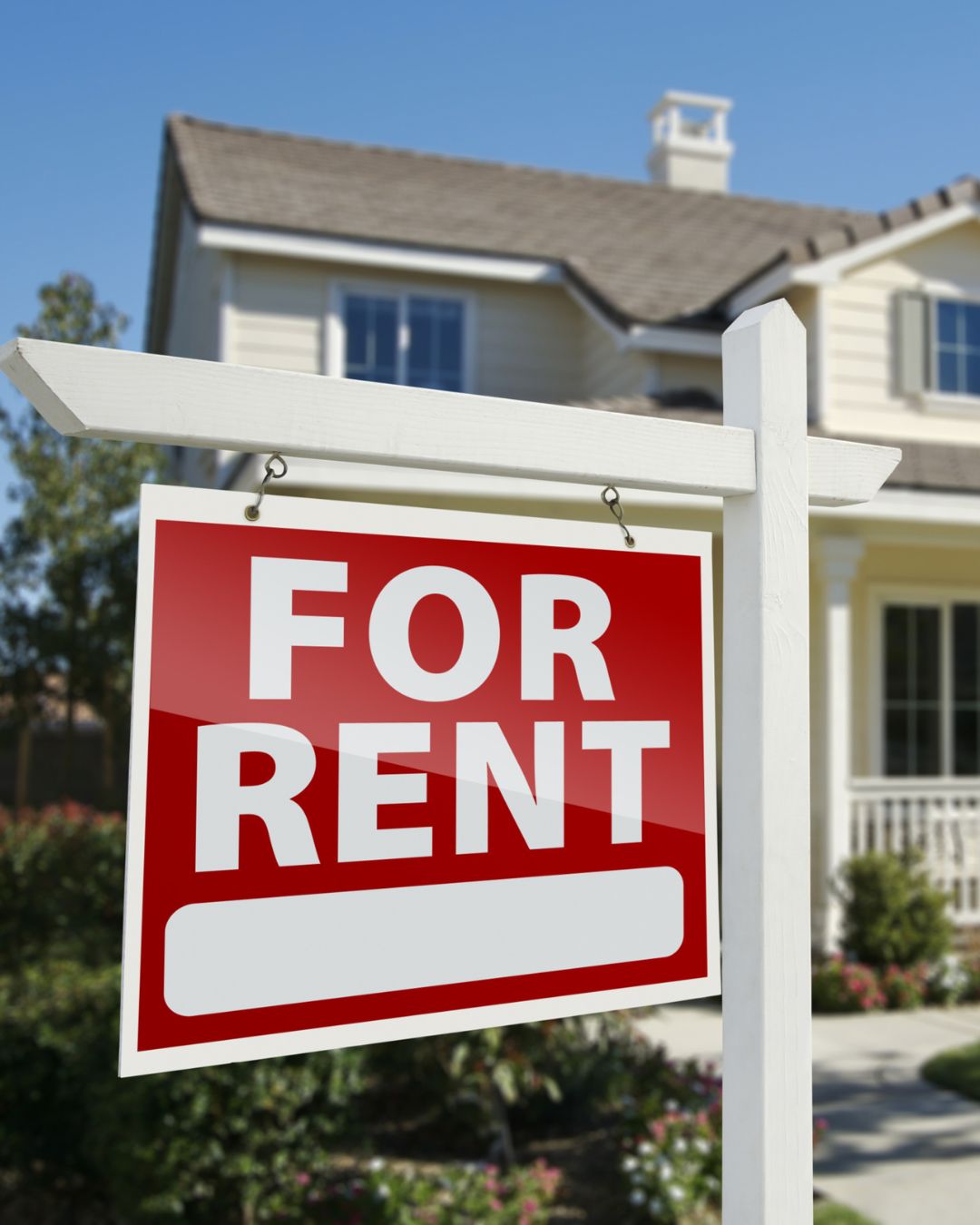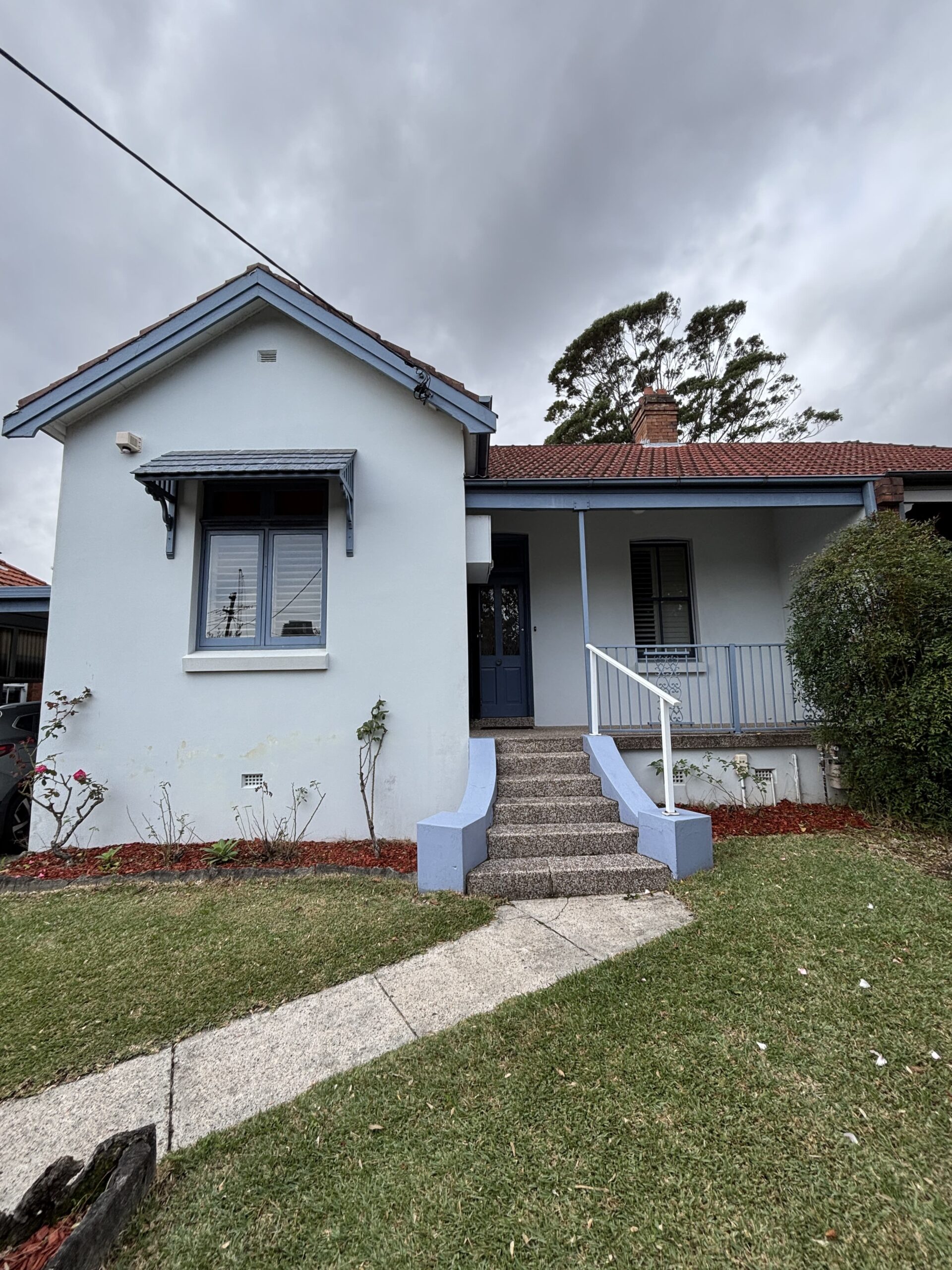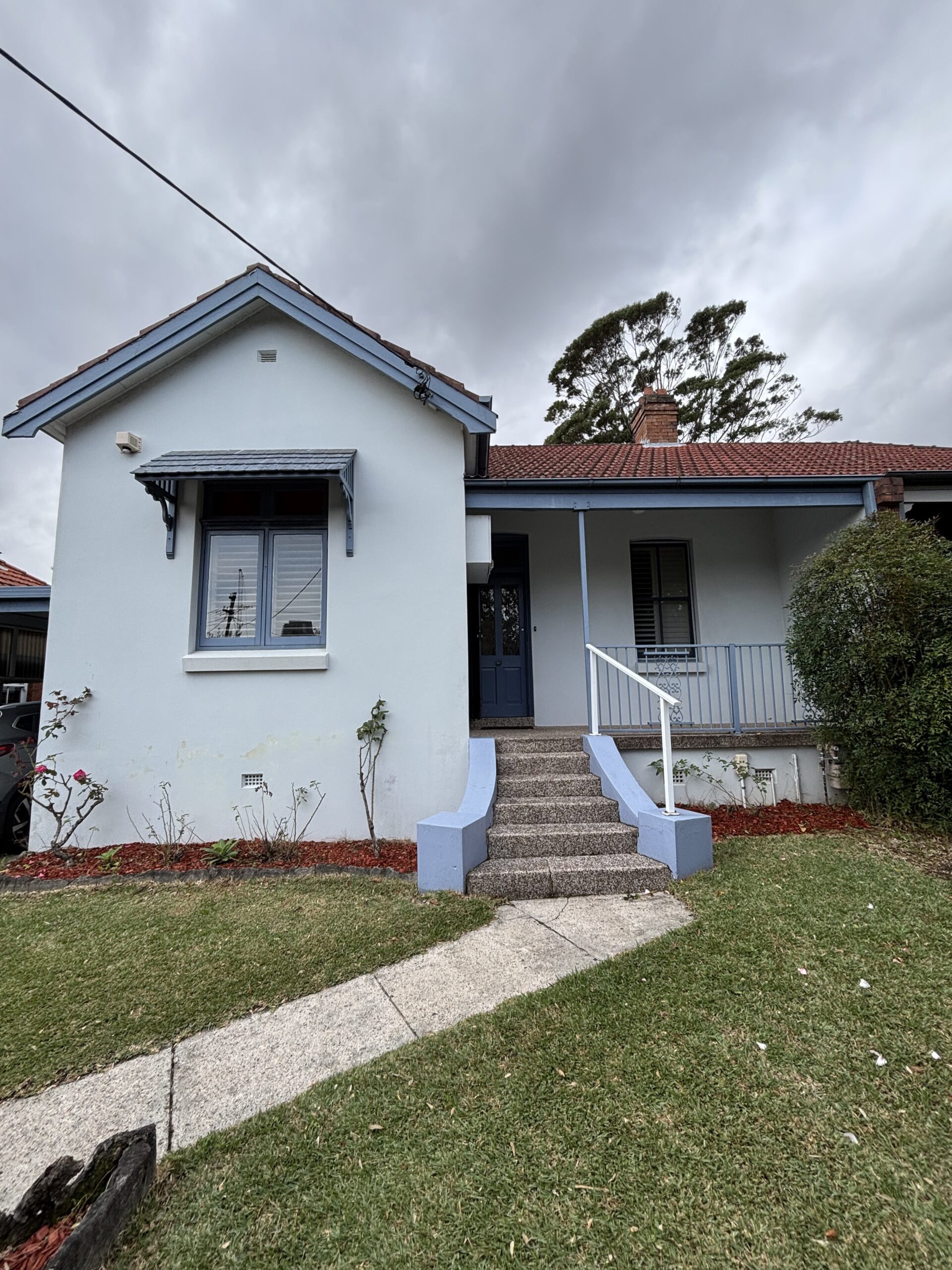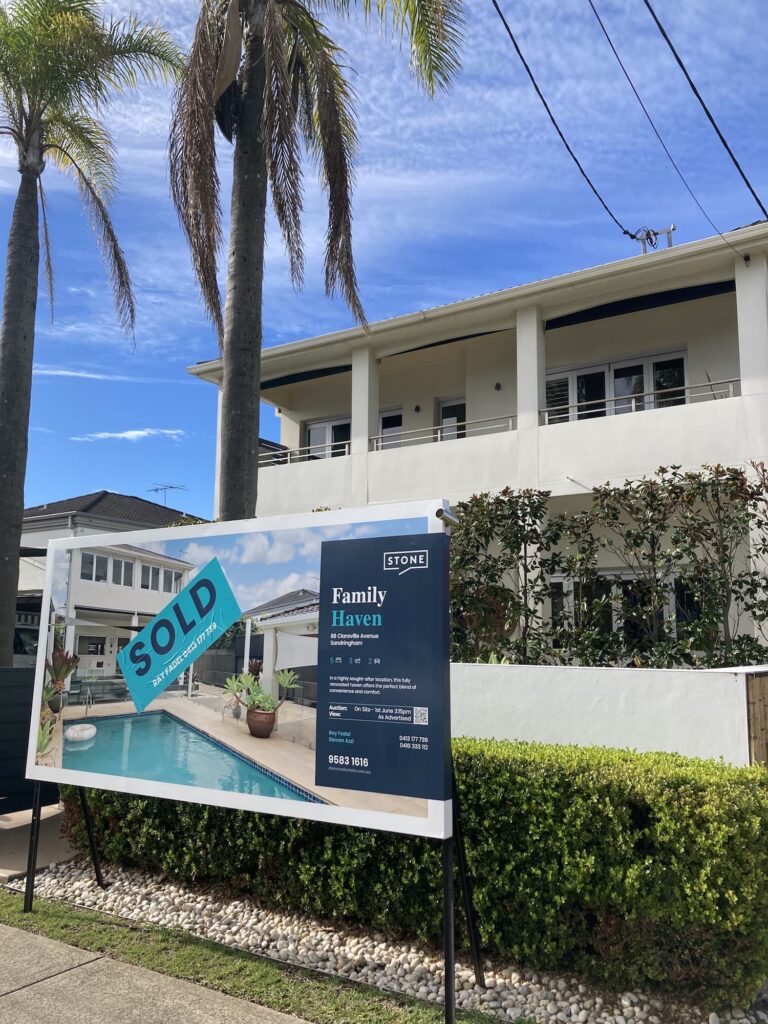
If you’re thinking about selling your home, you might be wondering whether you need to renovate before selling. This is a common question and certainly worth an exploration for every seller.
After all, we know that renovated homes sell for a higher price, attract more buyers and sell quickly.
However, we also know (at least think we know) that all renovations are expensive, time consuming and disruptive.
That’s why this post will be exploring the question of whether homeowners should renovate before selling including when it’s worth it and when to skip, busting misconceptions and showing you how with strategic updates you can add value while also making a profit.
Do renovations really add value?
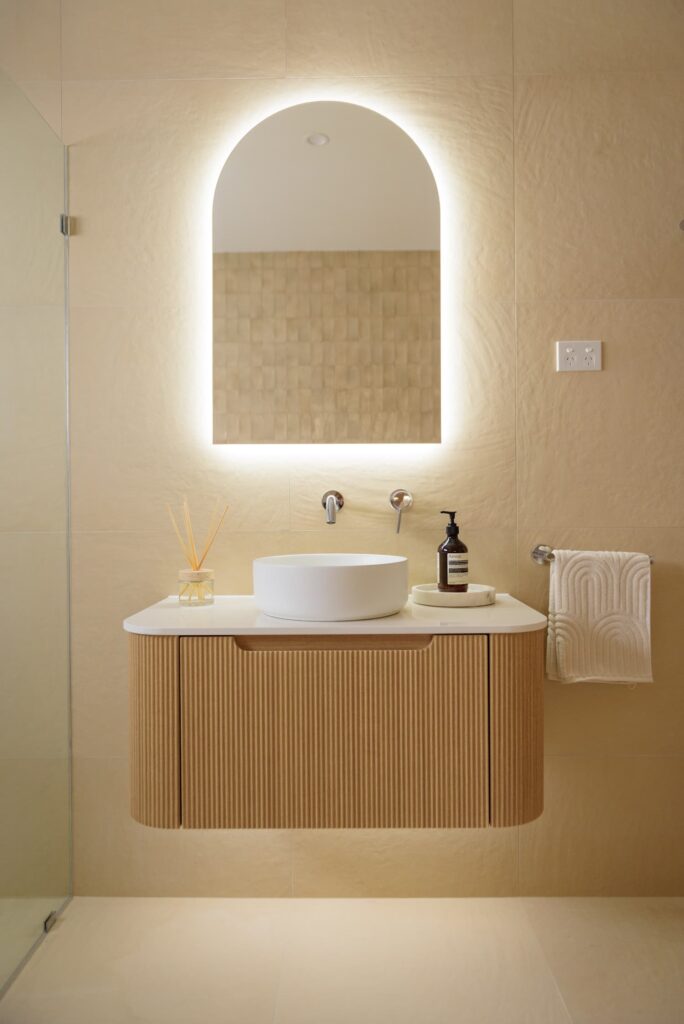
It should be obvious that renovated homes sell for a higher price (at least in the high impact areas like the kitchen and bathrooms).
But what you’re probably asking is “will I get a return on investment if I renovate before selling?”
That’s an important distinction because you want to be smart with your renovations and make sure you’ll see a monetary return on investment.
I also want to point out the other value adds.
#1 Pretty houses attract more buyers. More buyers mean more bidders at auction. More bidders mean the price will increase and you sell for more.
There’s also the value of time.
#2 Pretty houses sell quickly. By renovating and addressing potential buyer concerns, there are less reasons why a buyer would say no to your home and therefore make an offer.
Here’s an example that might help explain all these points:
A house undergoes renovations before selling.
- We remodel a bathroom with known ideas
- We reconfigure the floorplan to add a bedroom and dedicated study
- We add features like an outdoor kitchen and walk in pantry
- We make repairs
- Fresh paint
- Stying
Here are the results once the home goes on the market:
- It sells for nearly $400,000 more than the pre-renovated valuation
- The home attracts 8 registered bidders at auction
- The home sells in 3 weeks
To compare, other homes in this suburb that went on the market at the same time still have not sold after 4 months on the market and price guide reductions.
This is a real life example from the Sandringham NSW pre-sale renovation. We saw proof that the renovations add value in money, attracting more buyers to increase the sale price and saved time.
Renovation Myths Busted
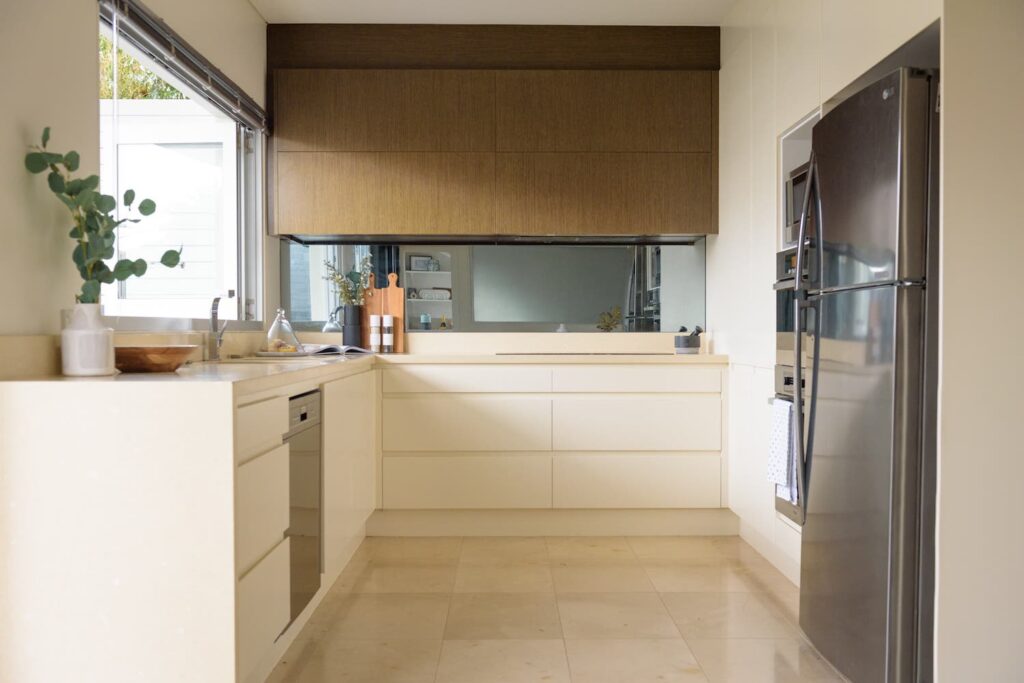
Now that we understand that not only do pre-sale renovations add monetary value, but also time, let me go over a few misconceptions about renovating before selling.
Myth 1: You need a full remodel
Here’s the reality: unless there are known issues, you may be able to make small cosmetic updates.
For example, let’s say you have a kitchen that’s last remodel was in 2000. The cabinets are in good shape and the drawers open and close properly. However, you have a dated black benchtop and mosaic splashback – styles that were popular at the time but not now.
A small update could be to replace the benchtop, splashback, hardware and tapware.
With these small changes, you’ll have a more modern kitchen, it will look and feel new, and buyers will appreciate that the items that wear (like benchtops and tapware) have been replaced.
Myth 2: Renovations are expensive
Like in the example in myth #1, small updates won’t cost as much as a full renovation.
And if you do need a full remodel, like when we had known issues in the Sandringham bathroom, there are many ways to save money.
Here’s some quick tips:
- Material choice
- Limiting the amount of tile options to 1 or 2 (this reduces wastage)
- Choosing larger tiles which have lower labour costs
- Keeping services where they are (i.e. not moving the location of the toilet or plumbing)
- Streamlining the design such as one shower head rather than a shower head and a hand shower
- Not doing floor to ceiling tiles
Myth 3: Renovations take too long and are disruptive
In reality, renovations done well take less time that you probably think.
We’ve all heard horror stories of kitchen renovations that drag on for months, with trades not showing up, or excuses like items are out of stock.
Here’s the deal: it doesn’t have to be this way.
- The first key is to have time expectations up front.
- A true professional trade should be on site every business day during business hours (7am-3pm) until the project is complete.
- Good project management means items are ordered and onsite before they are needed so there are no delays.
- If anything is out of stock, then look for acceptable alternatives rather than waiting.
As for disruptive to your life, any renovations where you are still living in the home will be a challenge.
No matter the space, there will be noise, dust and trades early in the morning. And if you’re renovating a kitchen or a bathroom, you’ll have to make alternatives like setting up a fridge and microwave in the dining room.
Some people have a greater tolerance for living like this than others (or easier circumstances such as a professional couple who’s gone during the day vs. a family with a stay at home mum).
If you are thinking about renovating before selling, it might be worth making a decision about where you are going to next and exploring whether you are able to move up that timeline. Basically move now, do the renovations in your old home, then sell.
If that’s not financially feasible, explore temporary housing such as living with family members or renting an AirBnb. You might also have luck checking out local Facebook Groups where people are going overseas and looking for a short term renter / house sitter.
What buyers are really looking for
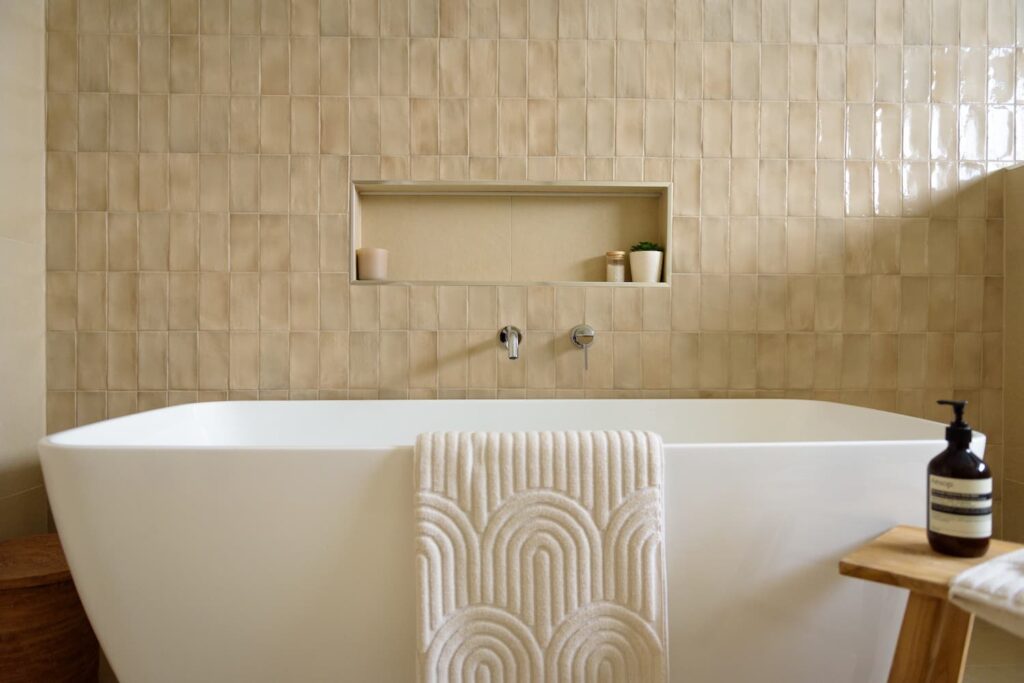
Now that we have an understanding of what pre-sale renovations can be, let’s now understand that not all renovations are equal in the buyer’s eyes.
Generally, the highest impact areas to renovate before selling are the kitchen, bathrooms and curb appeal.
The kitchen and bathrooms are highly used areas and often where most unseen problems lurk (such as an issue with plumbing). By renovating these spaces, you ease the buyer’s mind that there are any unknown issues, as well as eliminating the unknown in costs & unexpected surprises if they were to undertake the renovations themselves.
That’s another point – most buyers don’t have interest in immediate projects. Like you, they are weighing up the costs of renovations, the unknown, as well as the time. Unlike you, this is on top of a very large purchase price and new monthly repayments. They might not have the financial appetite (or even the ability) to also renovate.
Sure, there are some buyers that are looking for a “fixer upper”, but those are also not the buyers willing to pay a premium for your home.
A home that is move in ready, clean and less risk for issues in the early years will appeal to more buyers.
Key features
Beyond the refresh of existing features, it’s also smart to do local research of what features other competing homes in your suburb have that you don’t.
For example, in the Sandringham pre-sale renovation, I noted that all of the homes in our ideal price point had a walk in pantry, outdoor kitchen and dedicated study.
Even if some of these features don’t directly add value, they can detract if a buyer is comparing the homes. They might still make an offer, but they may also limit how high they can go to factor in the cost of adding those features.
In the Sandringham project, we added those 3 features so we could compete in the ideal price point.
The presentation
Beyond renovations, the home’s presentation will also impact the buyers perception of the home.
Fresh paint is one the highest impacts and can make a space feel brand new.
Updating the lighting (including new globes with matching colour temperatures) and professional styling are other big impacts.
Professional styling can make a home look more expensive than it is with designer furniture and decor that looks straight out of a magazine.
It also helps buyers envision how to live in the space. You may have orientated and used a room one way, but it’s not how most buyers will use that space. A professional stylist will consider what the most likely use of the space is and style it to help buyers imagine themselves living there.
Avoid overcapitalizing when you renovate before selling
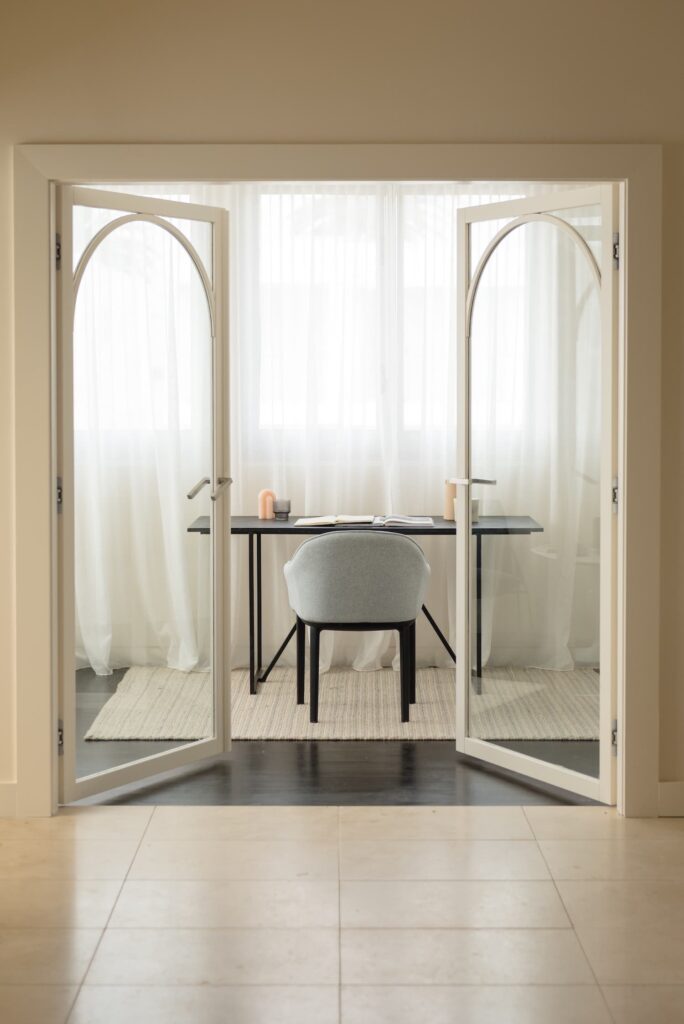
If you want to renovate before selling, the most important thing to consider is your return on investment, or whether you will make a profit.
Sure, it’s great to make your home magazine worthy, add new features and attract buyers, but you want to ensure you make money. Otherwise you are overcapitalizing (spending more than you’ll make back).
It may be hard to do, but try to detach from the emotional aspects of selling and consider your home as a financial asset. And like with any asset, this is an opportunity to increase its value.
Here’s how to do this.
Run a feasibility:
- Know your current pre-renovation valuation. Learn how to run comparable sales, get a professional valuation or ask 3 real estate agents for appraisals (make sure you get comparable sales to back up the price). If you’re in the Sydney area, you can also schedule a consultation with me.
- Know your potential. Look for comparable sales for after you’ve renovated. This will give you an idea of the number you can achieve but also what condition and features your home needs to have in order to achieve that price.
- Once you can see the gap between where you currently are and what you can achieve, work out a budget. Take into account your selling costs, what you’ll need for your next move, and what you are comfortable with. For some people, they are happy with a $50,000 profit, others need more.
- Work out your financing. If you don’t have cash, talk to a mortgage broker about financing options or you can explore a renovate now, pay at settlement option with me.
Choosing what to renovate:
- Update high impact areas first – the kitchen, bathrooms and curb appeal (so you have a great first impression)
- If it’s in good condition with no known issues, consider small cosmetic updates first. But you also need to understand your market – if the post-renovated comparables all have brand new kitchens with luxury features, replacing the benchtop probably isn’t enough.
- Have a list of plan B projects. These are things that won’t necessarily have a direct impact on value but will appeal to buyers (like in the instance of the outdoor kitchen). Once you start getting quotes, you’ll be able to see if you have room in the budget for them.
Get quotes:
- Understand the building requirements for your state and local council. For example, in NSW a building licence is a requirement for all work over $5000. Someone may tell you it’s cheaper to manage the trades but unless you have an owner-builder permit, you may get in trouble. (It’s also important to note that owner-builder eligibility requires you to live in the home after renovations, so if you plan to sell after, you’d be ineligible).
- You may need to get a CDC or DA for the work you want to do. This will add costs as well as increase time to get approval.
- Get a minimum of 3 quotes per builder or trade.
- Understand what’s included in the quotes including materials, HBCF (requirement for building work over $20,000 in NSW), what the timeline estimate is including start date, and what you can expect in terms of their work days, hours, and their communication.
- Try to compare quotes like for like as much as possible. Ask follow up questions if anything is missing or unclear.
- Check they have an active license and read reviews.
Design and Materials Selection
- Pinterest and Instagram are great sources for design inspiration, but you should also take the local market into account. Look at what has sold in your ideal price point and take note of the design styles.
- Supplying your own fixtures and finishes may save you money but make sure to factor in any delivery fees and the responsibility of safe storage on site (if it gets broken, that’s on you).
- Price compare your selections. You can do this with a Google search. You may be able to find the same product or a similar one you like for a cheaper price.
Check your numbers
- Before you sign any contracts or purchase anything, check your detailed budget against your pre-renovation and post-renovation value.
- If you’re not happy with the number (like there won’t be a profit, it’s too small a number or too risky), then edit your list of projects or consider finding a more budget option. If that still won’t work, then you might be better off without renovations but still paint, style and then list the home.
- If the number is good and you’ve included a 10-15% contingency, explore whether you can add the plan B projects in.
My personal success tips:
- I like to have a range for my post-renovation value. It’s essentially worst case and best case scenarios.
- I like at least 3 comparable sales to confirm my post-renovation value. I also take into account any outliers – similar homes that sold particularly well or really badly (price or took a long time). I’ll call the selling agent to get some insight to see if I need to take them into account.
- I tend to be conservative in my risk. That means I focus on the lower end of my estimated selling range, pad the budget (like say, allot $20,000 to painting when I think it will come in at $15,000) and have a large contingency. Then if I’m happy with that worst case scenario number, I can comfortably move forward.
- Explore all the options and get creative. If something is outside of your budget, look for alternatives. For example, outdoor kitchens can be very expensive. I explored a DIY option as well as a modular kit, which we ended up going with.
Real numbers
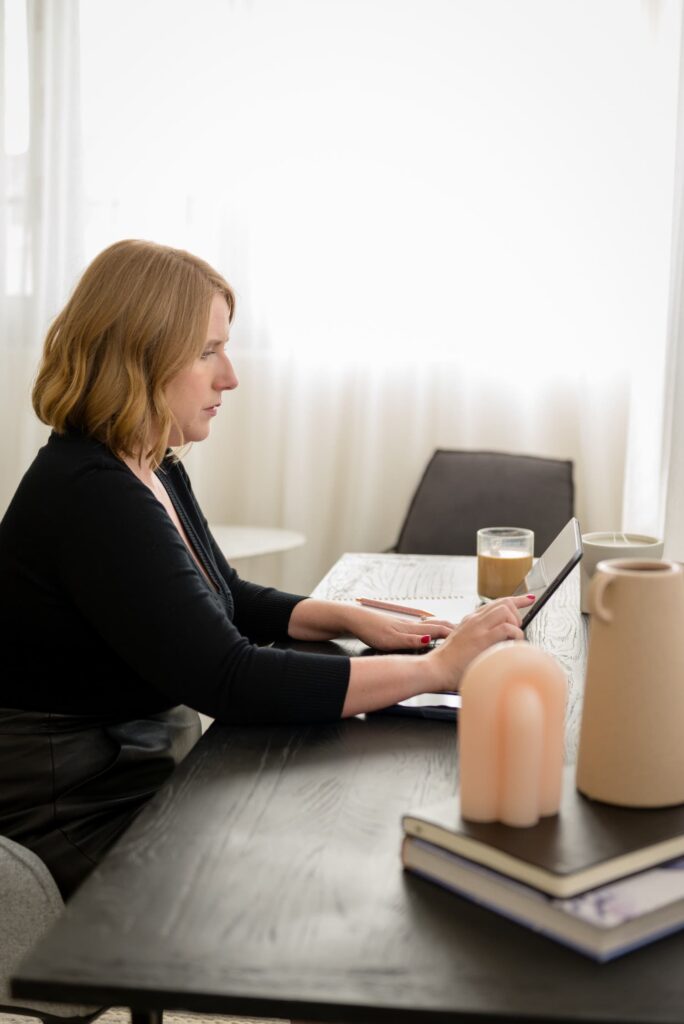
Now let’s look at real numbers from consultations I’ve done in the last year.
But first, let me mention that because prices are so high in the Sydney area, I’ve been able to make the numbers work on most properties. It’s not a question of if renovations before selling are worth it, but how can we get creative with the numbers we have.
Here’s some examples:
- A semi in Bondi Beach that hasn’t gained value since it was purchased 3 years ago can go from $3.8 million to $4.1-4.3 million with $200,000 in renovations. (We also explored a second storey addition which would yield the same net profit) This would allow them to make a profit vs. take a loss from their purchase price.
- A semi in Mascot that could go from $1.8 million to $2.1-2.4 million with $120,000 in renovations. This would allow them to be able to afford the next home in a more expensive suburb.
- A family home in Sandringham that didn’t sell after 2.5 months on the market could achieve their ideal price guide with $100,000 in renovations.
- A family home in North Manly could address previous buyer objections from past tries at selling to sell for $3.2-3.6 million with $100,000 in renovations.
- A unit with just a $100,000 gap between it’s pre-renovation value and low end of it’s post-renovation value could do a quick $30,000 cosmetic renovation in 3 weeks to get an additional profit and sell quickly.
I want to point out the many different circumstances that benefit by renovating before selling:
- You’ve tried to sell before but got too many objections or couldn’t get the price you wanted.
- You’ve been in your home for 30 years, it hasn’t been updated in awhile and you’re overwhelmed about what to do.
- You need to move but your ideal next home is slightly out of what you can afford now.
- You purchased your home in the last few years and need to sell, however the market hasn’t improved enough that you would sell for more or recoup your purchase costs (like stamp duty). If you’re going to take a loss, you’d rather stay in the home.
- The numbers are tight but you are also looking for the benefit of attracting more buyers and selling quickly by updating your property.
Conclusion
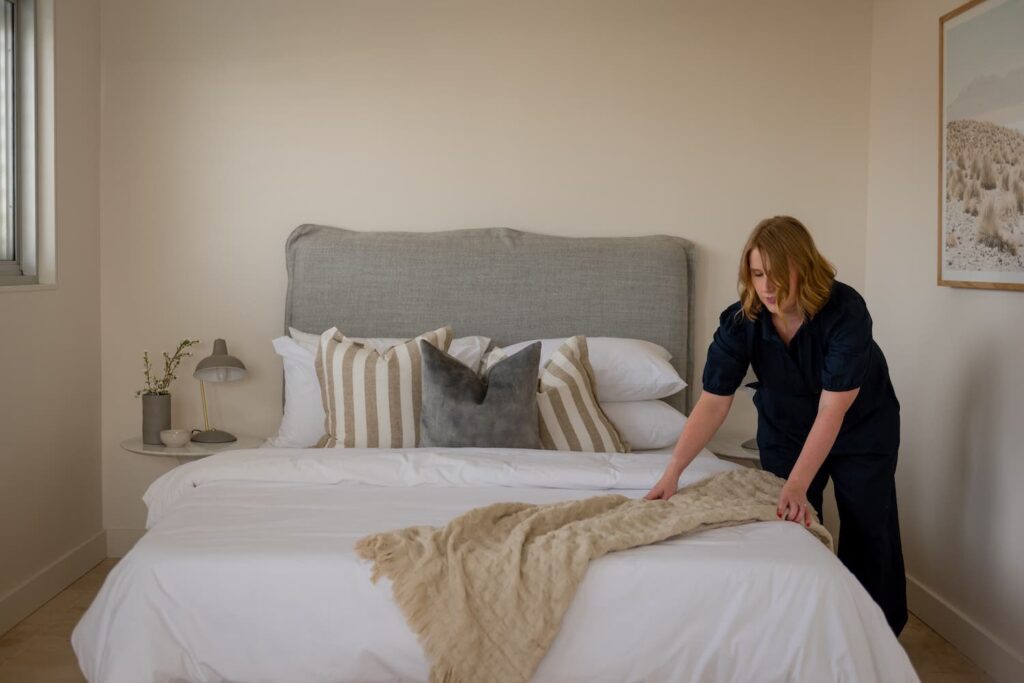
Wow, this post has been full of information. Now you should understand how to renovate before selling and make strategic decisions on your own home.
I’ve gone over:
- whether renovations add value
- busting myths about the costs and time of renovations
- explained what buyers are looking for
- tips on how to renovate before selling without overcapitalizing.
I’ve given you the tools to do it yourself, or I can do it for you with a consultation. I aim to give you all the information you need to make a strategic decision. Then if we choose to work together, I’ll take care of everything so you can have a stress-free experience and make a profit when renovating before selling.

